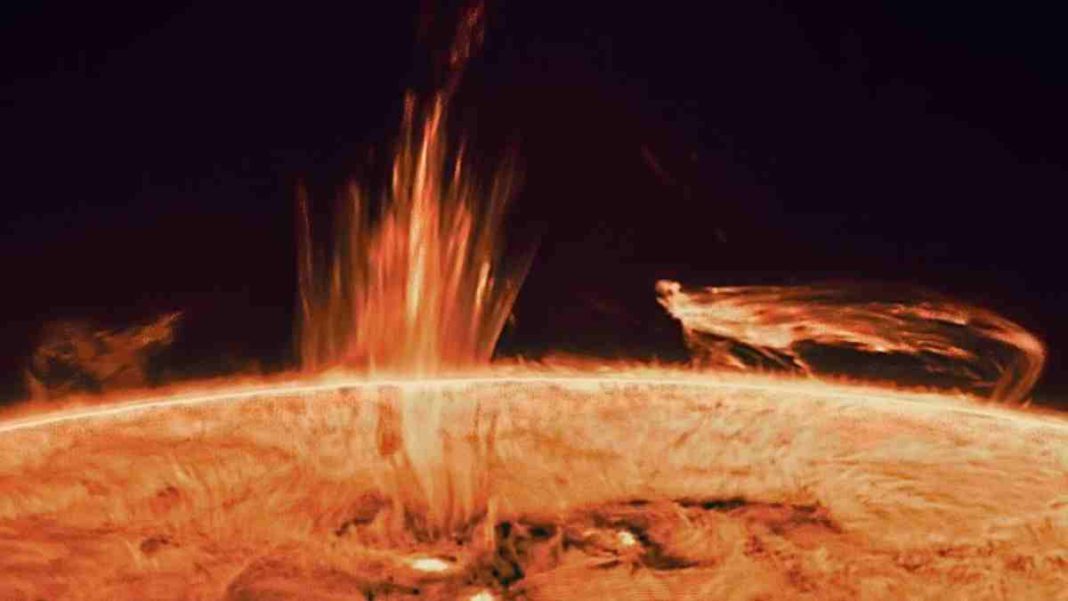UNITED STATES: A potent solar flare, categorized as X1.5, swept through the skies on Monday (Aug. 7), causing widespread disruptions to radio and navigation signals across North America.
This flare marked the 20th occurrence of an X flare, the highest classification for solar flares, within the ongoing 11-year solar cycle that is set to reach its peak next year.
Solar flares are intense bursts of energy and radiation originating from sunspots, magnetically dense and cooler areas on the sun’s surface.
The emitted photons from these flares reach Earth at the speed of light, interacting with particles in the ionosphere – the region of the atmosphere spanning altitudes between 50 and 400 miles (80 and 650 kilometres). This interaction supercharges the particles and impacts radio and satellite signals passing through this layer.
Renowned solar physicist Keith Strong reported that the solar flare triggered a strong category 3 radio blackout event, according to the U.S. National Oceanic and Atmospheric Administration’s (NOAA) five-point scale.
The disruption affected the daylit side of the Earth, spanning across the United States, Canada, and the Pacific Ocean, with frequencies below 5 Mhz taking the brunt of the impact, along with degraded navigation signals.
The solar flare erupted from the most significant and most active sunspot group visible on the sun’s disk, according to the U.K.’s Met Office. This event followed a relatively weaker X flare that occurred just two days prior on Saturday (Aug. 5).
Adding to the intensity, the sun unleashed several moderate-class flares in recent days, three of which emerged within the past 24 hours.
In response to these powerful solar activities, the Met Office raised a mild solar radiation storm warning due to the influx of charged solar particles into Earth’s atmosphere. Although classified as a mild category 1 event, these particles can potentially pose risks to astronauts, aircraft passengers, and satellites.
The Met Office anticipates further strong flares as the prominent sunspot cluster lingers in view but expects some respite as it disappears beyond the sun’s edge in the next two days.
In the interim, space weather experts brace for the impact of two coronal mass ejections (CME), massive clouds of magnetized gas frequently accompanying solar flares.
CMEs can trigger geomagnetic storms when interacting with Earth’s magnetic field, generating stunning aurora displays while potentially disrupting power grids and telecommunication networks.
Also Read: Powerful Solar Flare Activity Forecasted Today, Scientists Issue Warning



